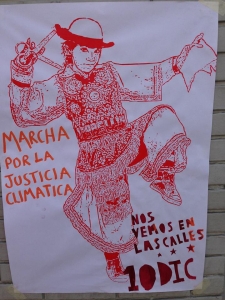
From Dec. 8 through Dec. 11, 2014, the People’s Summit gathered in downtown Lima, Peru, at the Parque de Exposicíon. The collective’s intention was to spread awareness and march in solidarity against a global capitalist system that has driven the world—and its people—toward the ecological and humanitarian destruction we face today.
Resistance and collective action were participants’ main goals. The People’s Summit members gathered to raise awareness about the need for climate justice and to influence discussion at the COP20, the 2014 United Nations Framework Convention on Climate Change (UNFCCC).
Reactions to COP20
For the People’s Summit and activists who participated at COP20, the U.N.’s conference did not achieve its necessary responsibilities. The end product was a weak agreement that is not legally binding and does not address the political and social implications of climate change.
AmazonWatch press conference panelist Pablo Salon said, “The real issue is the process of extraction [of fossil fuels], and here at the UNFCCC, there is no discussion about this.” Instead, climate talks were centered on reducing and curbing carbon emissions, not cutting the actual method of fossil-fuel extraction.
Natural resource extraction contributes to rapid land loss and increasing pollution in indigenous communities. But most indigenous people in Peru are not yet legally recognized and do not hold title to their lands. Without receiving proper land right titles, these indigenous communities are subject to corporate exploitation and government neglect.
In order to comprehensively address extractive infrastructure, we must take into account the over-consumptive capitalist model that makes fossil-fuel extraction a viable and necessary requirement for countries to reach economic success and recognition. Unfortunately, economic success through natural resource development still dominates climate discussions.
The People’s Summit responded to the UNFCCC’s lack of discussion about the role of capitalist and neo-colonialist structures in creating climate change. The group revealed to the public and the world how these existing structures are destroying the earth, as well as the livelihoods and futures of the generations to come.
Events and Functions
The People’s Summit comprised representatives of social and environmental activist organizations, labor unions, indigenous groups, and civil society. Organized events and functions were held to address a diverse set of complex issues that subsume climate justice. Land title rights, women’s rights, climate adaptation solutions, agricultural justice, and resistance against corporate interest were some of the target issues the People’s Summit addressed.
On Dec. 10, 2014, the People’s Summit organized the largest climate change march in Latin American history. The march drew about 30,000 people from across the globe to march in solidarity.
The Summit attendees went in to the streets of Lima, protesting the petroleum and gas industries and demanding that world governments conserve and protect the environment and the people of the world. The march ended in front of the Hilton Lima in Miraflores, where an extension to the COP20, the World Climate Summit, was taking place. The World Climate Summit is a corporate meeting where 500-plus of the biggest world business leaders and investors discuss how to invest in climate change mitigation. This summit, however, only continues market-based models for climate change mitigation—a self-serving economic model that benefits the interest of the world business leaders and governments in attendance.
Another major issue addressed at the People’s Summit was the reoccurring murder of those environmental activists and indigenous leaders in Latin America who stand up to governments and corporations. Peru is one of the most dangerous regions for environmental and land activists; at least 57 high-profile, activist leaders have been murdered there in the last 12 years.
On Nov. 28, 2014, Shuar indigenous leader José Isidro Tendetza Antún, from Ecuador, was reported missing. He had planned to speak out against the Ecuadorian government at the People’s Summit for inviting and allowing the Ecuacorriente transnational mining project to progress in the Yasuni National Park. His body was found bound and buried a week before his planned trip to speak at the climate talks in Lima.
Grassroots Movements Make a Voice
The COP20’s conclusion highlighted the important role that grassroots organizations and solidarity movements will have in the coming years for climate change mitigation and adaptation.
If we continue to try to fix the climate change problem using the same tools and global system that caused the issues, then we are only alleviating a symptom of the issue. The problem is the system, and until government officials and world powers address that, it will be up to the people—not corporations and political leaders—to create a voice for climate justice and adaptation. Adaptation will require a shift in technology, energy systems, and energy consumption, and most importantly, it will require a shift in consciousness within the people.
Links and References:
AmazonWatch press conference:
http://unfccc6.meta-fusion.com/cop20/events/2014-12-09-14-00-amazon-watch
Death of Shuar leader before People’s Summit:
http://www.theguardian.com/world/2014/dec/06/ecuador-indigenous-leader-found-dead-lima-climate-talks
March in Defense of Mother Earth:
http://www.larepublica.pe/10-12-2014/cumbre-de-los-pueblos-marcha-por-la-defensa-del-medio-ambiente-ya-empezo
Climate and Capitalism:
http://climateandcapitalism.com/2014/12/14/lima-agreement-fails-humanity-earth/
Blog picture citation:
https://www.facebook.com/media/set/?set=a.10152852766048279.1073741838.17414523278&type=3



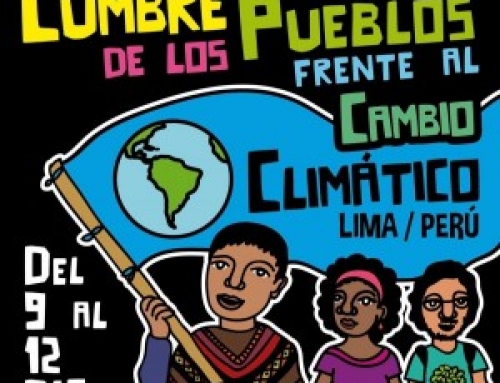
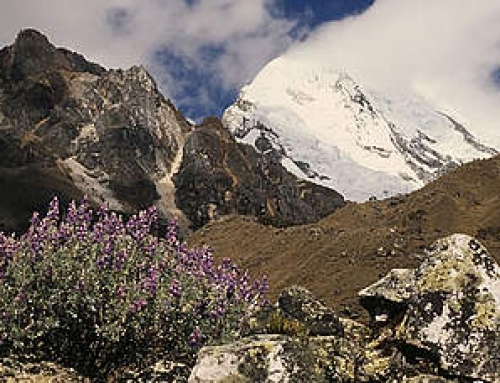
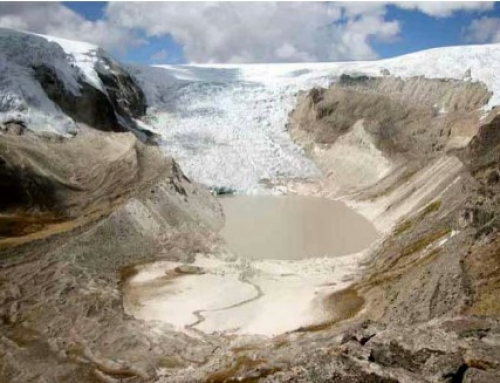
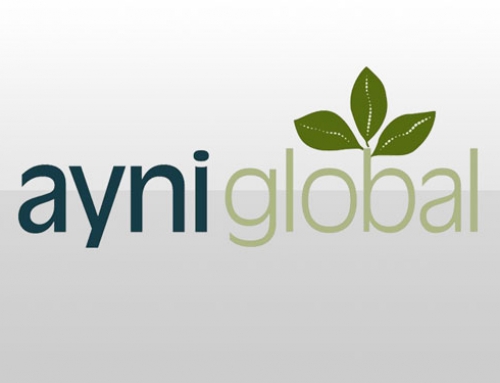
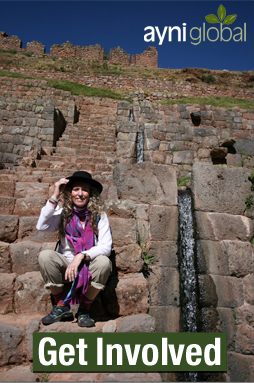
Leave A Comment